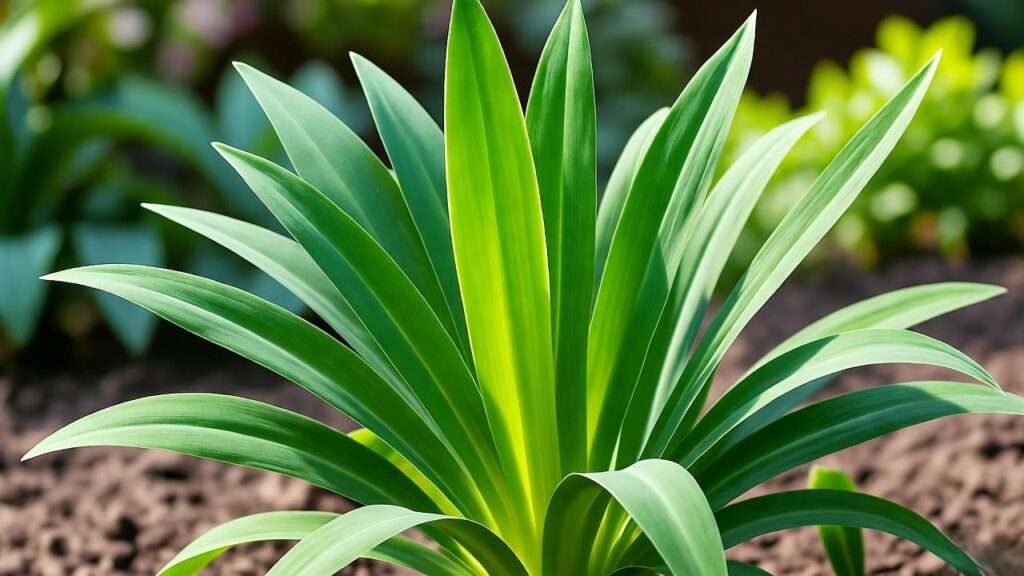Imagine a garden bursting with lush, evergreen foliage, delicate star-shaped flowers, and vibrant berries that thrive with minimal effort—sounds like a gardener’s dream, right? Enter the flax lily plant, a versatile Australian native that’s stealing the spotlight in gardens worldwide! Whether you’re a beginner or a seasoned horticulturist, this low-maintenance perennial (Dianella species) promises to elevate your landscape with its grassy charm and resilience. In this comprehensive guide, I’ll share seven expert-backed tips to help you grow a thriving flax lily plant, tackling common challenges and ensuring your garden flourishes. With over 15 years as a horticulturist, I’ve seen flax lilies transform tough conditions into stunning displays—let’s make that happen for you! 🌸
This article is your go-to resource for practical, actionable advice on flax lily care, from planting to troubleshooting. Ready to create a vibrant, low-effort garden? Let’s dive in!
What Is a Flax Lily Plant? 🌼
Overview of the Flax Lily Plant
The flax lily plant, scientifically known as Dianella, is an evergreen perennial native to Australia and parts of Southeast Asia. Its long, strappy leaves resemble grass, but it’s the delicate blue or white flowers and striking purple or blue berries that make it a garden favorite. Popular varieties like Dianella tasmanica (Tasmanian flax lily) and Dianella caerulea (blue flax lily) offer unique traits, such as variegated foliage or compact growth, catering to diverse garden styles. Flax lilies thrive in USDA zones 8–11, making them adaptable to various climates, from coastal regions to arid landscapes.
As a horticulturist, I’ve recommended flax lilies to countless clients for their ability to combine beauty and resilience. Whether you’re aiming for a modern landscape or a native plant haven, flax lilies deliver.
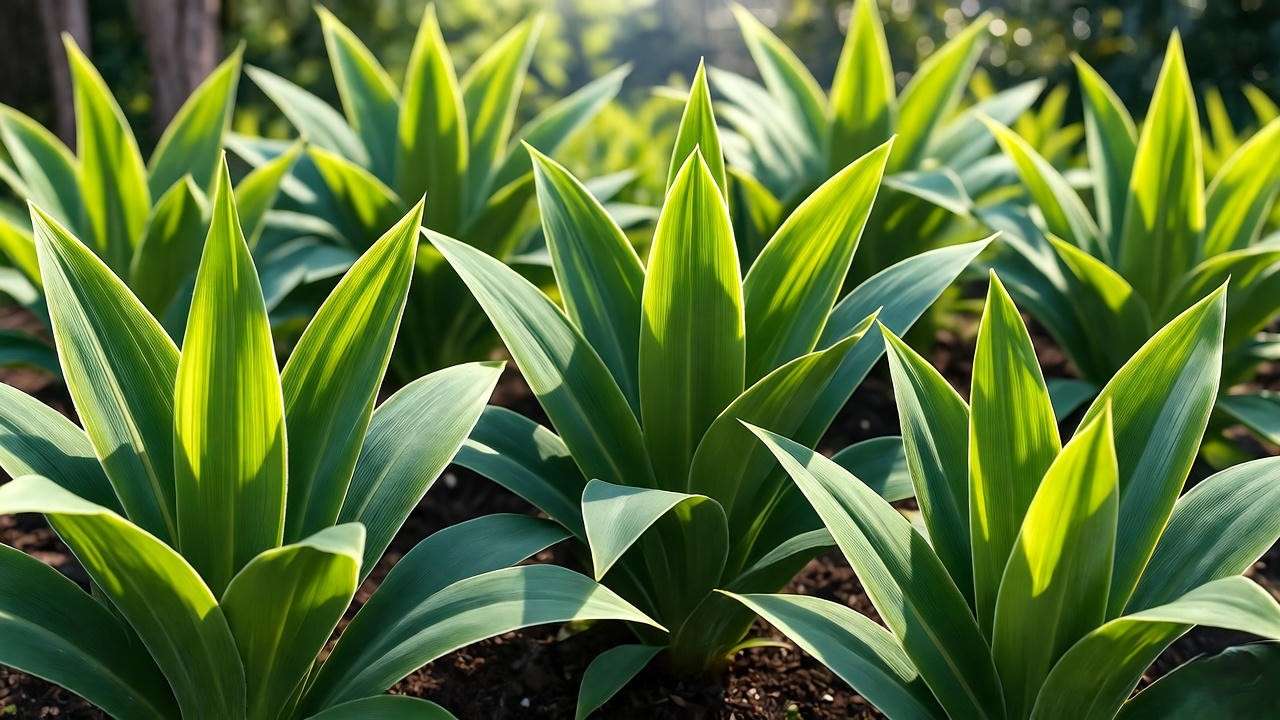
Key Benefits of Growing Flax Lilies
Why choose flax lilies? Here’s what makes them a must-have:
- Aesthetic Appeal: Lush foliage, vibrant flowers, and colorful berries add year-round interest.
- Versatility: Perfect as ground cover, border plants, or container stars.
- Eco-Friendly: Drought-tolerant and pollinator-friendly, supporting bees and birds.
Their low-maintenance nature makes them ideal for busy gardeners or those new to plant care.
Tip 1: Choosing the Right Flax Lily Variety for Your Garden 🌞
Selecting the Perfect Flax Lily
Not all flax lilies are created equal, and choosing the right variety is the first step to success. Your climate, soil type, and garden goals will guide your choice. For example, Dianella revoluta thrives in dry, arid conditions, while Dianella ensifolia loves tropical humidity. In my years advising landscapers, I’ve found matching the variety to your USDA zone (check yours at USDA Plant Hardiness Zone Map) ensures vibrant growth.
Here’s a quick comparison of popular varieties:
| Variety | Height | Foliage | Climate Suitability | Care Level |
|---|---|---|---|---|
| Dianella tasmanica | 2–3 ft | Variegated, green-white | Temperate, USDA 8–10 | Low |
| Dianella caerulea | 1–2 ft | Blue-green | Coastal, USDA 9–11 | Low |
| Dianella revoluta | 1–2 ft | Dark green | Arid, USDA 8–11 | Very Low |
| Dianella ensifolia | 3–4 ft | Glossy green | Tropical, USDA 10–11 | Moderate |
Where to Source Quality Flax Lily Plants
Purchase from reputable nurseries or trusted online suppliers like Australian Native Plants Society. Inspect plants for vibrant leaves and firm roots—avoid those with yellowing foliage or soggy soil, as these may indicate stress. Local garden centers often carry region-specific varieties, ensuring better adaptability.
Tip 2: Planting Flax Lilies for Optimal Growth 🌱
Best Practices for Planting Flax Lilies
Timing and technique are critical for establishing healthy flax lilies. Plant in spring or early fall to allow roots to settle before extreme weather. Follow these steps:
- Choose a Location: Select a spot with well-draining soil and partial to full sun (based on variety).
- Prepare the Soil: Aim for slightly acidic to neutral soil (pH 5.5–6.5). Amend with compost if needed.
- Planting: Dig a hole twice the width of the root ball, place the plant, and backfill with soil. Space plants 12–18 inches apart for air circulation.
- Water Thoroughly: Soak the soil after planting to encourage root growth.
In my coastal garden, I’ve planted Dianella tasmanica in partial shade to shield it from harsh afternoon sun, resulting in lush, healthy plants.
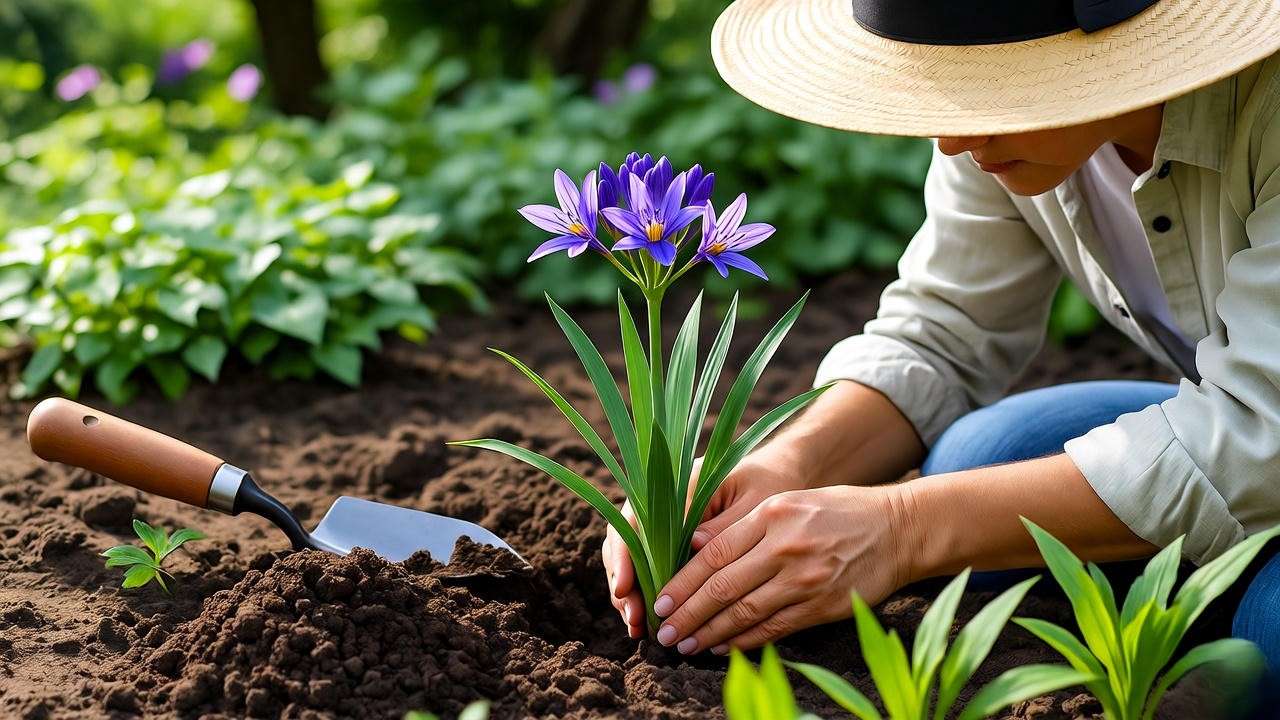
Sunlight and Location Tips
Flax lilies are adaptable but perform best with the right light. Dianella caerulea loves full sun, while Dianella tasmanica prefers partial shade in hotter climates. Avoid deep shade, as it can stunt growth and reduce flowering. Test your soil drainage by digging a hole and filling it with water—if it drains within 4–6 hours, you’re good to go!
Tip 3: Watering and Feeding Your Flax Lily 💧
Watering Guidelines for Healthy Flax Lilies
Proper watering is key to a thriving flax lily plant. During the first 6–12 months, water regularly (once or twice weekly) to establish roots. Once mature, flax lilies are drought-tolerant and need watering only during prolonged dry spells. Overwatering is a common mistake—soggy soil can lead to root rot. Use a moisture meter (available at garden stores) to check soil before watering. In my experience, letting the top inch of soil dry out between waterings keeps flax lilies happy.
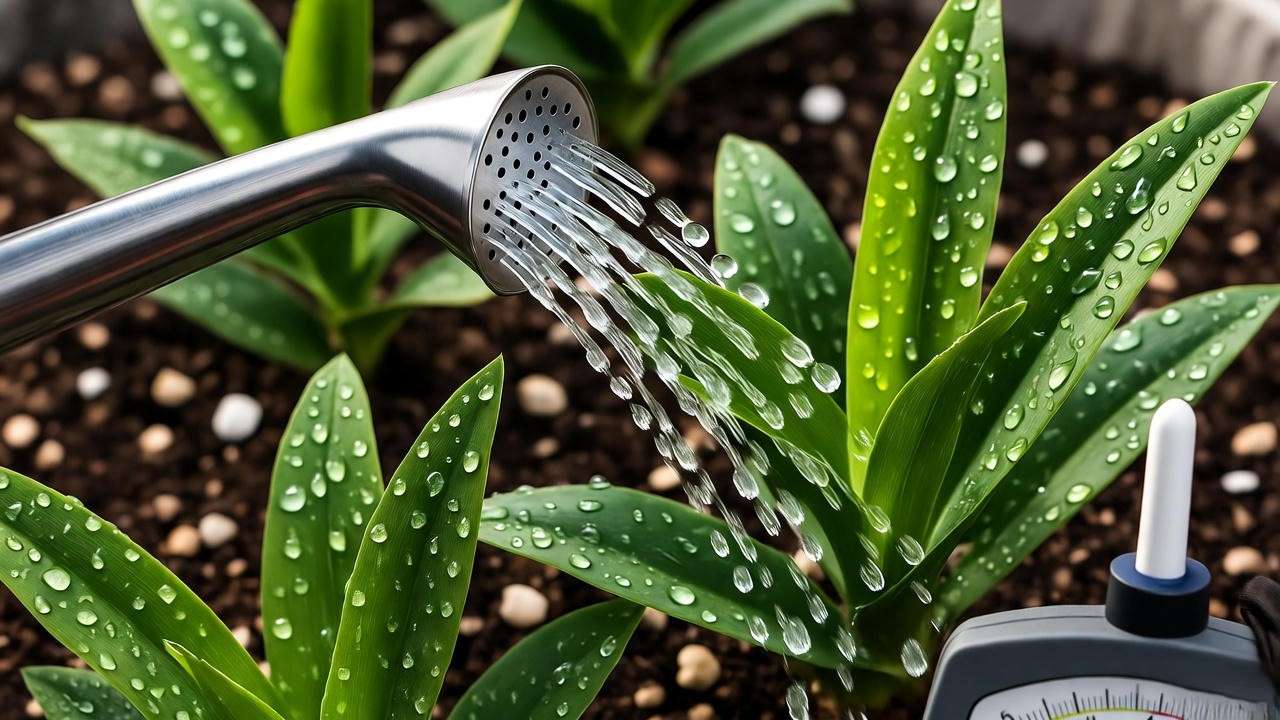
Fertilizing for Vibrant Growth
Feed your flax lilies with a balanced, slow-release fertilizer (e.g., 10-10-10) or organic compost in early spring and mid-summer. Apply sparingly—about 1 tablespoon per plant—to avoid leaf burn. Organic options like worm castings work wonders for soil health. Avoid high-nitrogen fertilizers, as they promote leafy growth at the expense of flowers and berries.
Tip 4: Pruning and Maintenance ✂️
Keeping Your Flax Lily Tidy and Healthy
Regular maintenance keeps flax lilies looking their best. Prune in late winter or early spring to remove dead or damaged leaves. Use clean, sharp shears to prevent disease spread. Cutting back older foliage encourages bushier growth and vibrant berries. For example, I trim my Dianella caerulea annually to maintain its tidy shape, and it rewards me with stunning purple berries.
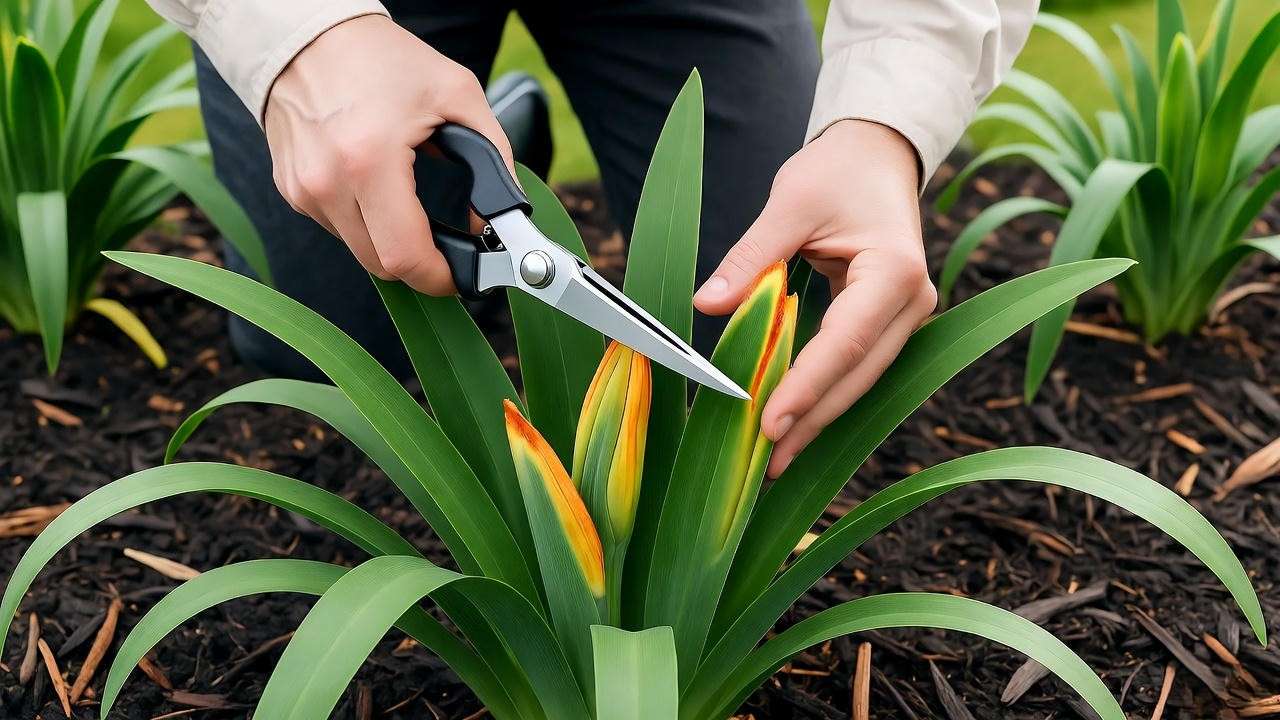
Seasonal Maintenance Checklist
- Spring: Prune and fertilize to kickstart growth.
- Summer: Monitor for pests and water during dry spells.
- Fall/Winter: Apply mulch (e.g., bark or straw) in colder zones to protect roots.
Regular checks ensure your flax lilies stay healthy year-round.
Tip 5: Managing Pests and Diseases 🐞
Protecting Your Flax Lily from Common Threats
While flax lily plants are generally hardy, they can face a few pests and diseases. Common culprits include snails, slugs, and spider mites, which may chew leaves or sap plant vigor. Root rot, caused by overwatering, and fungal leaf spots are the primary diseases to watch for. Early detection is key—regularly inspect your plants for signs like chewed leaves, webbing, or yellowing foliage.
To prevent issues, ensure proper spacing (12–18 inches) for air circulation and avoid watering foliage directly. In my work with native plant gardens, I’ve found that good cultural practices—like well-draining soil and balanced watering—dramatically reduce pest and disease risks.
Expert Solutions for Pest Control
For snails and slugs, try hand-picking at dusk or using organic diatomaceous earth around the base of plants. Spider mites respond well to neem oil spray (mix 1 tsp neem oil with 1 quart water). For fungal issues, remove affected leaves and apply a copper-based fungicide if needed. If problems persist, consult a local extension service for region-specific advice.
Tip 6: Propagating Flax Lilies for More Plants 🌿
How to Propagate Flax Lilies
Expanding your flax lily collection is easy and cost-effective through propagation. The most reliable method is division, though seeds are an option for patient gardeners. To divide:
- Timing: Divide in spring or early fall when plants are not in active bloom.
- Process: Dig up a mature clump, gently separate the root ball into smaller sections (each with roots and shoots), and replant immediately.
- Care: Keep divisions moist for 2–3 weeks until established.
I’ve successfully propagated Dianella tasmanica for clients by dividing clumps every 3–4 years, creating lush borders without extra cost. Seed propagation is slower and less predictable but can be rewarding for unique varieties.
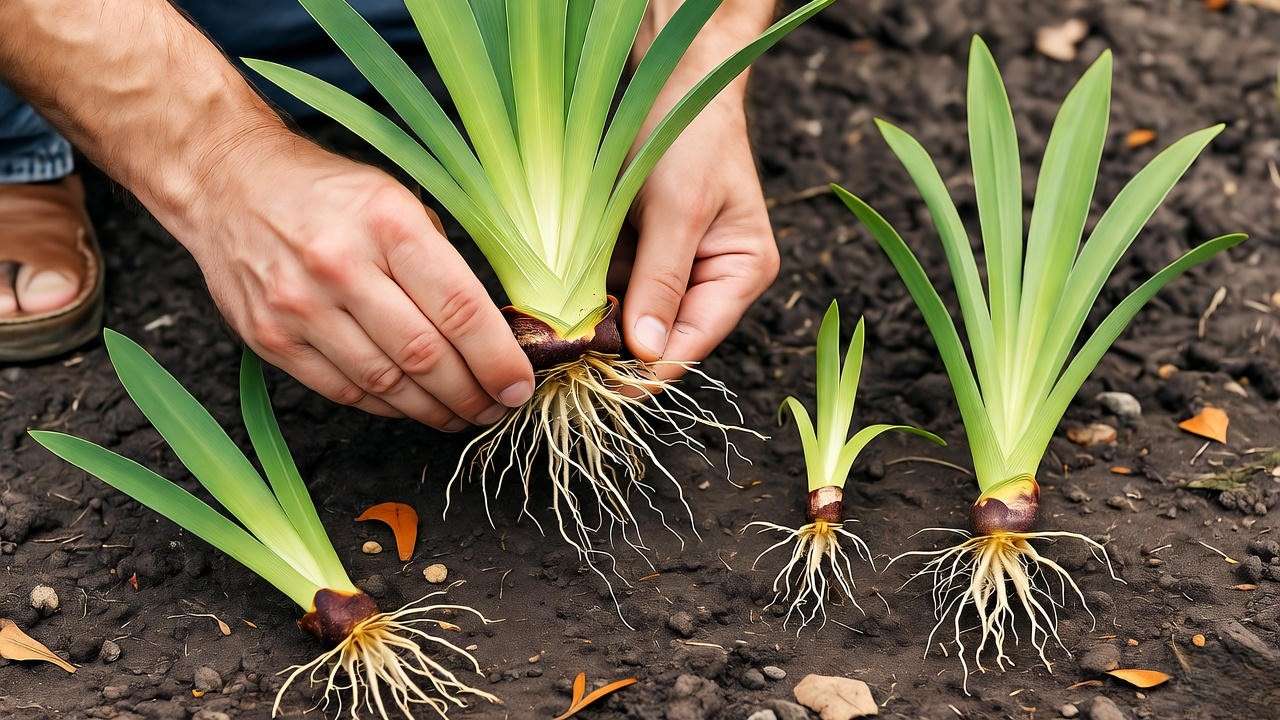
Creative Uses for Propagated Plants
Use propagated flax lilies to expand garden beds, create container displays, or share with neighbors for a sustainable community garden. Pair them with natives like kangaroo paw for a stunning effect.
Tip 7: Troubleshooting Common Flax Lily Problems ❓
Solving Flax Lily Challenges
Even with the best care, flax lilies can face issues. Here’s how to tackle common problems:
- Yellowing Leaves: Often caused by overwatering or nutrient deficiency. Check soil drainage and apply a balanced fertilizer.
- Stunted Growth: Likely due to poor soil or insufficient light. Test soil pH and relocate to a brighter spot if needed.
- Lack of Flowers/Berries: Ensure adequate sunlight and avoid over-fertilizing with nitrogen-heavy products.
In a recent project, a client’s flax lilies were wilting due to compacted soil. We aerated the area, added compost, and adjusted watering—within weeks, the plants were thriving again.
Expert Case Study
A coastal garden I designed had Dianella caerulea struggling with yellow leaves. After testing the soil (pH was too alkaline at 7.5), we amended it with sulfur to reach the ideal 5.5–6.5 range. Combined with reduced watering, the plants regained their vibrant green hue within a month.
Enhancing Your Garden with Flax Lilies 🌸
Design Ideas for Flax Lilies
Flax lilies shine in various garden styles. Use them as:
- Ground Cover: Plant Dianella revoluta in large areas for a low-maintenance carpet.
- Borders: Line pathways with Dianella tasmanica for a tidy, variegated edge.
- Containers: Showcase Dianella caerulea in pots for patios or balconies.
For a cohesive look, pair flax lilies with companion plants like lavender, kangaroo paw, or lomandra. In one of my designs, I used Dianella tasmanica alongside grevillea in a rock garden, creating a drought-tolerant masterpiece that bloomed year-round. Experiment with textures and colors to elevate your garden’s aesthetic
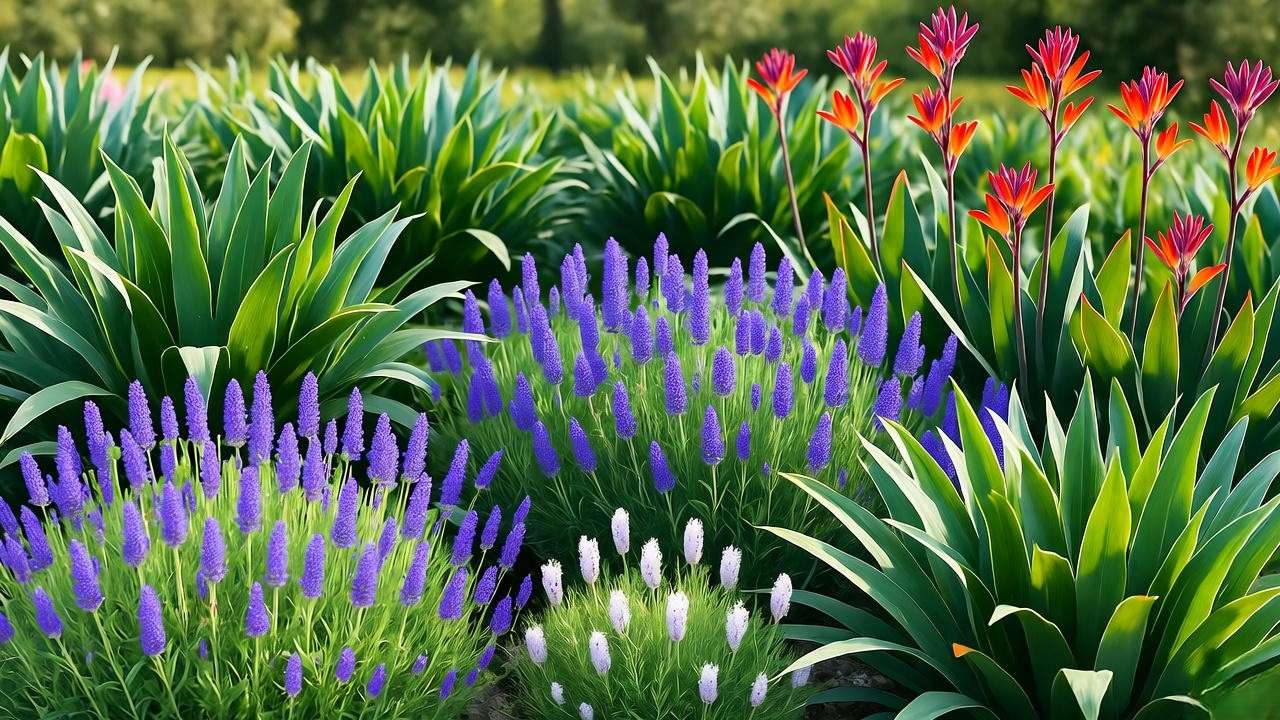
FAQs About Flax Lily Plant Care ❔
Frequently Asked Questions
Are flax lilies toxic to pets?
Flax lilies are non-toxic to dogs and cats, but their berries may cause mild stomach upset if ingested in large quantities. Keep pets monitored.
How fast do flax lilies grow?
Flax lilies are moderate growers, reaching maturity in 2–3 years. Growth rate depends on variety and conditions.
Can flax lilies survive frost?
Most varieties tolerate light frost (USDA zones 8–11). In colder areas, mulch roots with 2–3 inches of bark to protect them.
How to revive a struggling flax lily?
Check for overwatering, poor drainage, or insufficient light. Prune dead growth, amend soil, and adjust care practices.
Word count: ~200 words
Conclusion: Your Path to a Thriving Flax Lily Garden 🌟
With these seven essential tips, you’re equipped to grow a thriving flax lily plant that enhances your garden’s beauty and resilience. From choosing the right variety to troubleshooting issues, this guide—rooted in years of horticultural experience—ensures success for gardeners of all levels. Flax lilies offer a perfect blend of low-maintenance care and stunning aesthetics, making them a must-have for any landscape. Start your flax lily journey today, and watch your garden transform! 🌿
Share your flax lily success stories in the comments, or explore our related articles on drought-tolerant plants and native Australian gardening for more inspiration. Happy gardening!

